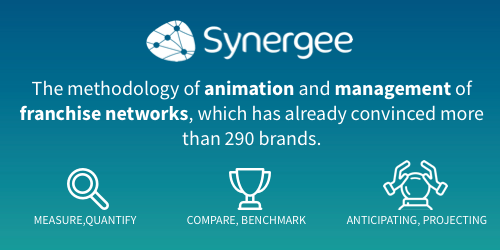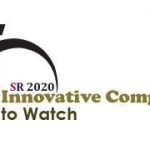The time when it was possible to run a business with a simple "nose", no matter how experienced it was, is well and truly over. Managing a business has become a frighteningly complex exercise due to the drop in profitability, rapid changes in consumption models, and competition from web players. It is no longer possible to trust one's instincts; it is necessary to measure, quantify and objectify in order to understand the situation and make the right decisions.

For the franchisor things are even more complicated. How can you manage a network whose franchisees navigate by sight when you are only in daily contact with customers?
Is the offer in adequacy with the expectations of the market?
Does my network correctly reflect the franchisor's policy?
Is the customer experience the same throughout the network?
What is the financial health of my network, what are the prospects for results?
These are all questions that the franchisor asks himself and for which he would like to have simple, quick and reliable answers.
STEP 1 - MEASURE, QUANTIFY
A network evolves daily. This is why the very first step is to set up a reference frame of reference of the latter which will make it possible to better know it, as well concerning the site (address, surface areas, concepts, location, operating mode, hours and days of opening), as the franchisee (Siretlegal structure, closing date, year of birth operators). It will be the backbone to manage its network.
Every franchise contract includes a clause obliging the franchisee to send his tax package annually . For a good number of franchisors, this represents a significant human cost to collect the information and the processing of the information remains very basic. They are stored in a shared directory and only come out again in case of difficulties encountered by the franchisee. This is a pity, because the annual accounts represent a real opportunity to have a global view of the health of one's network.
- Determine the necessary reference ratios in the pre-contractual documentation
- Measure the financial health of the network, thanks to a risk score calculated for each franchisee.
- Identify the best students
- Have a consolidated view of the network and comparative by criteria (Zone, Concept, Surface, Type...)
- The annual accounts are only a mirror that does not allow you to steer, but a solid starting point to know your network and measure its evolution.
To finalize this first step, we now need to measure the pulse of the network, for this we need to rely on activity indicators. Their number must be limited, no more than ten KPIs (Key Performance Indicators), which affect the different facets of the business (traffic, turnover, transformation rate, average ticket, product mix, but also customer satisfaction, loyalty rate...).
These indicators are presented through an activity dashboard, for which particular attention must be paid to ease of reading and the effectiveness of the analysis.
This first step takes no more than 3 months to complete and provides an understanding of the health of the network and efficient management of the network. It allows to create a culture of figures and to objectify the performance of the franchisees.
STEP 2 - IMPLEMENTATION OF THE PALMARES AND BENCHMARK CULTURE
To take full advantage of the first step, it is now essential to set up a solid animation that will draw on this financial and commercial information to improve the network's performance.
The animation of the franchisee network, carried out by the regional directors, the area managers, is the cornerstone for moving towards a performance culture. Gone are the days of "I have the feeling that, I have the feeling that". The time has come to objectify the results and to be able to compare oneself with one's peers.
A franchisee is by nature alone in his business. He does his best to offer the products and services expected by his customers. But it is very difficult for him to know what he could do better and what would allow him to improve his performance.
Turnover is stagnating, is this normal? What about the other stores? Is it a problem of location? Is it a problem of attractiveness of my store? Is it a merchandising problem? Is the pricing practice adequate?
These are all questions that can be answered using the indicators set up previously.
In order to be able to compare what is comparable, i.e. a store with a similar surface area in a similar environment (city center), it is essential to have a complete and up-to-date reference system. For all comparable analyses, it is necessary to rely on panels that group together points of sale with the same characteristics.
The first practice to adopt, which aims at emulating franchisees among themselves, is that of ranking lists. Periodically, rankings are disseminated within the network based on various key indicators. This ranking has two virtues:
Positioning yourself in relation to your peers is a starting point, I am 35th in terms of sales but 5th in terms of customer satisfaction, and 1st in terms of profitability per square meter.
Over time, measuring its evolution in relation to the rest of the network, "I went from 35th place to 23rd in terms of revenue between 2019 and 2020, but I lost three places in terms of customer satisfaction".
This internal competition is driving the network towards performance, with each franchisee trying to get ahead of its predecessor. The annual conventions are generally the place to present trophies to the winners of the various rankings.
The second practice derived from the ranking is benchmarking. This time it consists of comparing one's point of sale with comparable panels. Let's imagine that we compare my profit and loss statement (C/R) to a panel of city-center stores with a surface area of between 200 and 300 square meters.
This approach has the virtue of quickly highlighting the strengths as well as the points of vigilance or improvement of the point of sale. For example, it is identified that stocks turn over 2.2 times a year whereas the reference panel turns over 3 times a year. This raises the question of why (purchasing policy, pricing), the impact(WCR, cash flow) and the measures to be taken to remedy this (layout, product choices).
The implementation of this culture of numbers and measurement must be accompanied to bear fruit in the field by the facilitator whose job is to use these tangible elements to guide the franchisee.
In order to structure the facilitator's approach, a standard visit report is strongly recommended. It allows to scan all the important points in the daily management of the point of sale (customer reception, offer, management, after-sales service) to be able to "score" in a regular way (monthly or quarterly) qualitative data thanks to a questionnaire.
This questionnaire makes it possible to identify the points of vigilance and to associate an action plan to them.
The action plan is essential because it allows the measures to be adopted to be monitored over time by identifying a person in charge, progress and a target implementation date.
A follow-up visit is always welcome. It allows the progress made thanks to the actions implemented to be evaluated through an updated score.
The franchisee is now equipped to monitor its network and has tools to emulate performance. The time has come to look to the future, to anticipate.
STEP 3 - ANTICIPATING, PROJECTING
The exercise of drawing up a business plan or a provisional budget is particularly difficult when it is the first time. It is all the more difficult for a franchisee who is often a merchant and is not accustomed to this approach.
Having gone through the first two steps beforehand allows the franchisee to control its key indicators. He now knows his turnover without having to refer to his accountant, the composition of his product mix, his margin rate.
Knowing our starting point, the time has come to indulge in the difficult exercise of forecasting.
Often franchisees, when it comes time to make their first budget, ask me "what's the point of making a budget, I'm doing my best anyway". After several budgeting exercises, they say, "I've been forced to set goals, make assumptions and make progress in understanding my business".
The budget exercise is a key moment in the franchisee's activity, it forces them to reflect, analyze and project themselves. "What is my ambition, am I ready to take risks? What actions can I take to improve attendance? How can I improve my average basketmy conversion rate? What investments should I make? What salary policy should I adopt? These are all questions that we ask ourselves and for which we must provide answers through our plan.
The budget is not an end in itself, but a tool. It allows you to put together a file in order to obtain a loan but also to measure month after month the differences with the actual results in order to have a better understanding of your activity.
How many business plans remain in a drawer after they have been drawn up, they deserve to be revisited periodically, to be challenged in the face of reality, this is the best way to master one's activity, which has become critical in a complex environment that is evolving more and more rapidly.
You have understood that these three steps allow you to enter a virtuous circle, the franchisee is a business leader who must have the tools and knowledge to manage his business. These three steps, which consist in regularly measuring his activity through indicators, are the first stones in the edifice. It allows you to know where you stand. The second step, through benchmarking, is to identify its strengths and weaknesses. Finally, the last step is to define and implement a performance plan in order to achieve your objectives.
Through the experience of supporting 290 client brands, Synergee has developed this 3-step methodology which allows our clients to gain in efficiency and to reinforce the quality of the network (reduction of failure rates, increase in profitability).
Indeed, through our platform, we offer an iterative approach that creates a virtuous circle of performance improvement and strengthening the culture of sharing. It is value-creating for the network and allows teamwork, the indispensable collaboration in the hectic world we know.
Written by Laurent Dubernais, CEO of Synergee.




